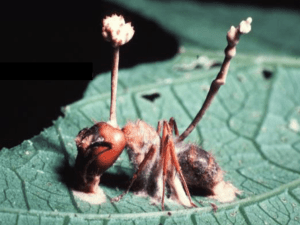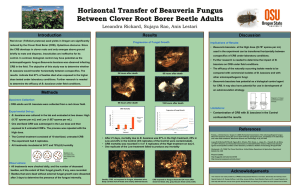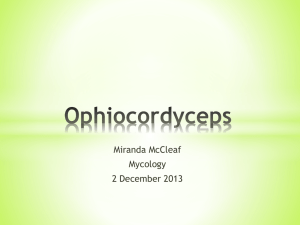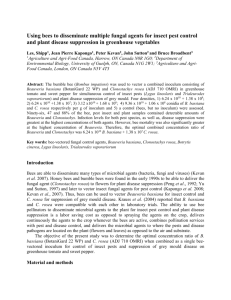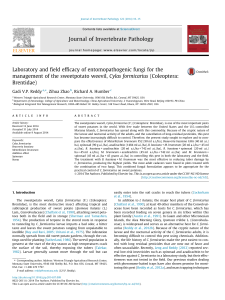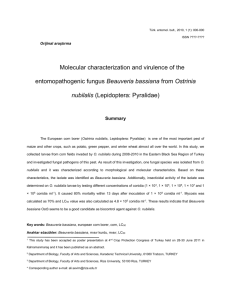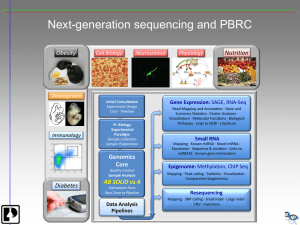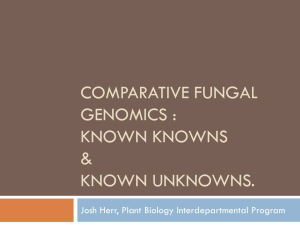2012_유전체학회초록_Cordyceps_bassiana_Final
advertisement
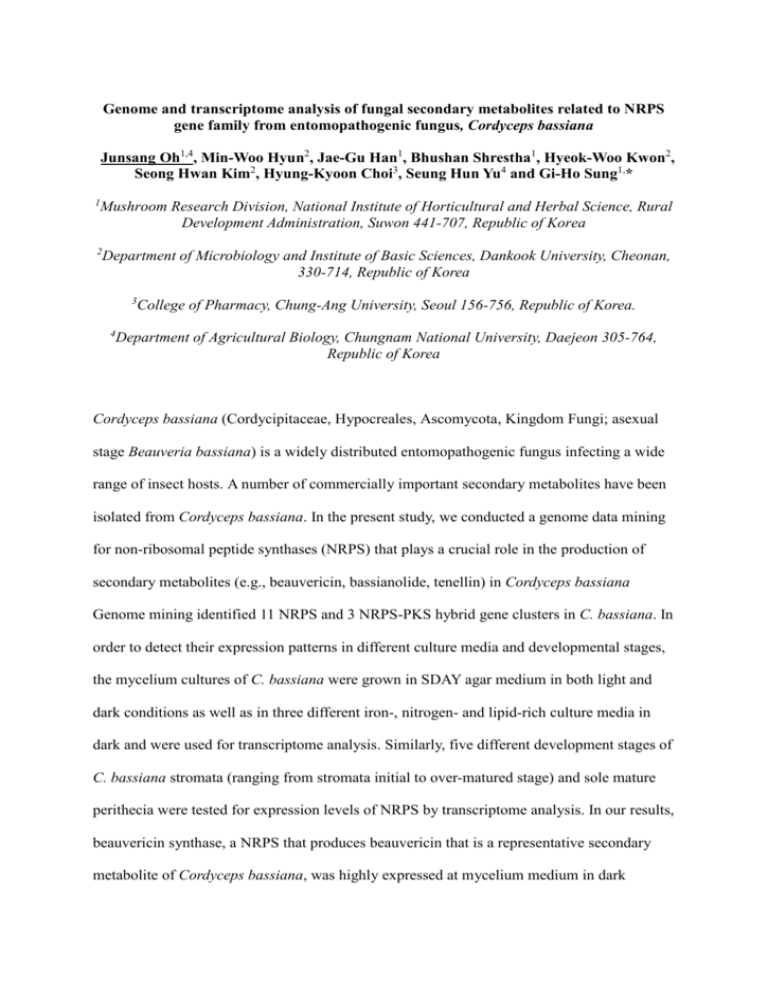
Genome and transcriptome analysis of fungal secondary metabolites related to NRPS gene family from entomopathogenic fungus, Cordyceps bassiana Junsang Oh1,4, Min-Woo Hyun2, Jae-Gu Han1, Bhushan Shrestha1, Hyeok-Woo Kwon2, Seong Hwan Kim2, Hyung-Kyoon Choi3, Seung Hun Yu4 and Gi-Ho Sung1,* 1 Mushroom Research Division, National Institute of Horticultural and Herbal Science, Rural Development Administration, Suwon 441-707, Republic of Korea 2 Department of Microbiology and Institute of Basic Sciences, Dankook University, Cheonan, 330-714, Republic of Korea 3 4 College of Pharmacy, Chung-Ang University, Seoul 156-756, Republic of Korea. Department of Agricultural Biology, Chungnam National University, Daejeon 305-764, Republic of Korea Cordyceps bassiana (Cordycipitaceae, Hypocreales, Ascomycota, Kingdom Fungi; asexual stage Beauveria bassiana) is a widely distributed entomopathogenic fungus infecting a wide range of insect hosts. A number of commercially important secondary metabolites have been isolated from Cordyceps bassiana. In the present study, we conducted a genome data mining for non-ribosomal peptide synthases (NRPS) that plays a crucial role in the production of secondary metabolites (e.g., beauvericin, bassianolide, tenellin) in Cordyceps bassiana Genome mining identified 11 NRPS and 3 NRPS-PKS hybrid gene clusters in C. bassiana. In order to detect their expression patterns in different culture media and developmental stages, the mycelium cultures of C. bassiana were grown in SDAY agar medium in both light and dark conditions as well as in three different iron-, nitrogen- and lipid-rich culture media in dark and were used for transcriptome analysis. Similarly, five different development stages of C. bassiana stromata (ranging from stromata initial to over-matured stage) and sole mature perithecia were tested for expression levels of NRPS by transcriptome analysis. In our results, beauvericin synthase, a NRPS that produces beauvericin that is a representative secondary metabolite of Cordyceps bassiana, was highly expressed at mycelium medium in dark condition. In this study, the phylogenetic analysis of adenylation domains of NRPSs with a sampling of Cordyceps bassiana and representative species of euascomycetes indicated that beauvericin synthase is hypothesized to be a product of gene fusion and duplicated into bassianolide synthase. The detailed information of expression levels of NRPSs of Cordyceps bassiana and the phylogenetic structure of adenylation domains of NRPSs will be discussed with a special emphasis of future research directions (e.g., target gene disruption of NRPSs and induction of silent biosynthetic gene clusters). *email:sung97330@gmail.com
